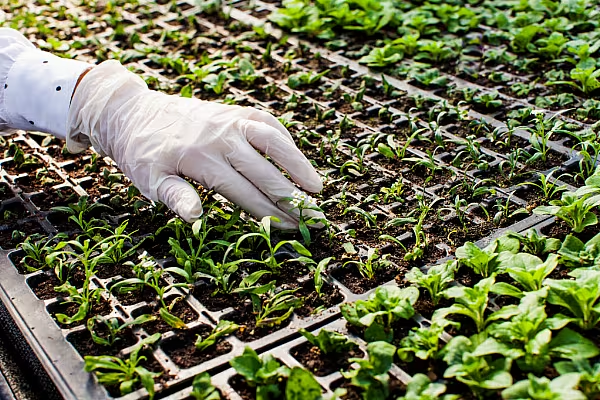Olaf Koch, partner, Zintinus, and Marc-André Kamel, partner, head of global retail practice, Bain & Company, explore some of the dynamics that could lead to a massive transformation in the global food industry. This article first appeared in ESM September/October 2022.
The public debate about the food system started almost 40 years ago. At that time, it was primarily NGOs that pointed out the challenges. The intensive discussion about global warming, coupled with comprehensive scientific knowledge regarding the health and sustainability of food, has caused consumers to rethink.
This phenomenon is increasingly affecting their consumption patterns, and it has evidently been further accelerated by the pandemic. All of this reinforces the notion that we may be at a tipping point that could cascade into action by a wide range of stakeholders, leading to a systemic transformation of the food system.
Market Dynamics
Consumer preferences have shifted towards healthier and more sustainable food over recent years. This trend accelerated during the pandemic.
In a recent Bain & Company survey, consumers set health as priority number two and sustainability as priority number four in their purchasing decisions. The fact that quality (i.e. taste and performance) remained priority number one suggests that consumers will probably not tend to make compromises in the long term when it comes to taste.
Chances for up-and-coming brands are improving, while the pandemic has further accelerated consumer demand, particularly among millennials and Gen Z, who are now the largest segment of the adult population. In a European consumer survey conducted in June 2021, roughly 40% of millennials and Gen Z stated that they have been eating healthier food since the start of the pandemic, and roughly 75% stated that they spend more on food products in order to buy sustainably.
Plant-Based Revolution
Innovators and up-and-coming brands have evidently made progress in recent years. Of course, this impression is created by discovering more innovative products on store shelves, but it can also be backed up with solid data.
The market value of plant- based products in North America and Europe grew by approximately 300% between 2009 and 2020, to a total of $16 billion (€16.02 billion), according to Euromonitor. Plant-based milk substitutes have meanwhile reached a global market share of 12%, making them a mainstream product. These figures clearly indicate that we are on a path towards lasting change.
This can also be observed in the case of alternative meat, the global market share of which has been rising steadily and is now at 0.5%, according to GlobalData, and could reach growth levels similar to plant-based milk substitutes. That would create a multibillion-dollar opportunity.
However, the most recent GFI report on plant-based sales for 2021 showed some slowdown in the US, with a total growth of just 6% and flat sales for plant-based ‘meat’ versus the previous year. Adjusted for inflation, there was actually a decline in the unit sales of plant-based meat.
One explanation could be exceptionally high sales figures during the first year of the pandemic and a shortage of raw materials. However, it is likely that the price point, taste, and health aspects all played a role, since some products still use additives that are viewed critically.
Gaining Market Share
Barriers to market entry seem more surmountable for up-and-coming brands in the food sector. This is due to several factors: direct sales to consumers, new marketing tools that are cost efficient and very effective, and the co-manufacturing landscape.
In addition, the proliferation of more channels has certainly helped to introduce new products more easily and inexpensively. The growing relevance of e-commerce for grocery during the pandemic has further solidified market changes. D2C for dry goods and quick commerce proved to be fast-growing routes to market. There is also a significantly increased willingness among leading retailers to include innovative products in their ranges. Quite a few of them have launched dedicated programmes to promote alternative food products.
Elsewhere, the rise of contract manufacturing has significantly changed by providing infrastructure that can be used by several brands. These often highly specialised partners are essential to lower investment needs, accelerate time to market, ensure high quality, achieve attractive unit economics, lower the execution risk, and reduce complexity for up-and-coming companies.
Read More: What Role Will The Metaverse Play In The Retail Sector?
Media Dynamics
An important aspect in reaching a tipping point is public opinion. Over recent years, the public interest in healthy and sustainable food has been growing steadily. The public debate about global warming and the shock waves of the pandemic have amplified these discussions.
Public attention has steadily increased, which is also reflected in the search behaviour of users. Interest in several relevant food tech areas is growing. Media coverage of plant-based products increased tenfold from 2017 to 2022. During the same period, web searches for content related to plant-based products have also increased rapidly, as a Google trend analysis shows.
Another remarkable phenomenon is the number of critical documentaries released about the food system, which have reached millions of viewers on both national networks and streaming services and created awareness about some of the significant challenges. Media reporting and public discussion act as reinforcing powers towards consumers, but also for entrepreneurs, investors, corporations and politicians.
Investment Dynamics
Improved market circumstances and intensified media attention have also had a positive impact on the investment sector. In general, ESG (environmental and social governance) has gained significant attention in recent years, especially after the Paris Agreement. The value of assets in publicly available ESG funds swelled from $3.7 trillion (€3.7 trillion) in 2020 to $6.4 trillion (€6.4 trillion) at the end of November 2021, according to JP Morgan Chase.
In a survey conducted among large institutional investors by Morrow Sodali, 95% responded to focus on ESG topics when making investment decisions and 85% when voting. This shows that institutional shareholders have raised their attention to, and engagement with, ESG aspects. This is becoming more and more relevant for companies in the food system because its challenges have become transparent. Investors are increasingly focused on these risks and have publicly declared their ESG requirements for future investments.
While this change is occurring in the equities market, venture funding is also shifting. For a long time, ‘downstream’ technology – meal delivery systems, quick commerce and e-grocery – have been in focus. This changed in 2020, which was the first year in which ‘upstream’ investments related to food production and supply (e.g. precision farming, alternative proteins, food waste management) surpassed ‘downstream’ investments, with a total $15.8 billion (€15.82 billion), according to AgFunder.
Apparently, the momentum continued to grow in 2021, with ‘upstream’ investments reaching $18.9 billion (€18.93 billion). In 2021, the alternative-protein sector alone reached a record funding level of $5 billion (€5.06 billion), GFI data shows.
Framework Dynamics
For a long time, the public debate on global warming was focused on the energy and transport sector. In recent years, awareness has grown about the relevance of the food sector. NGOs had been urging this for a long time.
The year 2015 marked a turning point, with 196 parties adopting the Paris Agreement, a legally binding international treaty on climate change. In the same year, the UN released its SDGs, which have been adopted by all member states. The SDGs have defined a framework to secure peace and prosperity for people and the planet. Many of them have a direct or implicit link to the food system.
Governments around the world have started to respond to growing pressure from NGOs, media, and the public. Several areas have been covered through new regulations or initiatives to address public health and sustainability (e.g. HFSS regulation through product ingredient/formulation tax).
One area to keep in mind are subsidies, which have been traditionally strong for the agricultural sector. The targeted promotion of innovative food tech and agritech approaches can prove to be challenging and require additional efforts.
Uncertainties To Consider
Various factors suggest that we might be at the tipping point, however – as with every transition – there remain various uncertainties that need to be considered.
Consumer preferences and buying habits generally change slowly. The recent acceleration in demand for alternative products may also have been extraordinary due to the pandemic.
Some key barriers to consumer adoption will still need to be addressed to unlock the next wave of growth. Some producers struggle to match the taste and texture of the original proteins. Additionally, some alternative protein products do not necessarily meet key health criteria because they can be high in salt, fats, and synthetic preservatives, and of comparatively lower nutritional value.
This tension is becoming even stronger as we see growing consumer demand for natural/clean products. Price parity is even more important in the current context of inflationary pressures and will be required to achieve mass change.
Another area to watch, of course, is regulation. Governments will have a chance to influence the impact and velocity of change through policies and regulatory initiatives. Shifting resources and changing priorities will obviously create pushback, and how persistent the status quo will be remains to be seen.
Some domains still require ‘breakthrough’ innovations to turn into alternatives suitable for communities across the world. In many areas, it is not yet clear which technologies will be the right ones to solve some previously mentioned barriers and whether consumers will accept those technologies (e.g. lab-grown meat). It will be necessary to monitor those innovations to calibrate engagement and resource allocation. Timing is of the essence in some of the very progressive areas.
Lastly, it seems advisable to take a holistic view on upcoming change, including the required infrastructure. Scaling some of the promising solutions will require substantial quantities of ingredients and processing capabilities. For example, we see some capacity constraints appearing in the production process of plant-based protein (e.g. availability of raw materials at the right cost, precision fermentation capacity, and economic viability).
Market participants are trying to overcome those challenges (e.g. by looking for other protein sources), but there could be, at least, temporary shortfalls or distortions, which might hinder fast expansion for a short period.
Read the full report, Food Tech: Turning Promise into Opportunity, by Olaf Koch, partner, Zintinus GmbH, and Marc-André Kamel, partner, head of global retail practice, Bain & Company, here.
© 2022 European Supermarket Magazine – your source for the latest technology news. Article by Olaf Koch and Marc-André Kamel. Click subscribe to sign up to ESM: European Supermarket Magazine.














